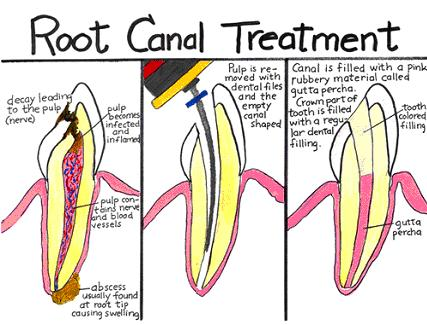
– physical irritation – generally brought on by aggressive tooth decay (cavity) reaching down to the nerve or through deep fillings, which allows harmful bacteria to reach the nerve resulting in infection and decay.
– trauma – a blow to a tooth or the jaw can cause damage to sensitive nerve tissue within the tooth.
Copyright © 2023 Shadow Rock Dentistry. All rights reserved.
about:Dr. Vik was recently recognized as one one the top dentists in Colorado by 5280 magazine. He grew in Colorado Springs and Pueblo areas. He received his Doctor of Dental Medicine degree from Tufts University in Boston, MA, in 2001. Dr. Vik aspired to be a Dentist when he was hit with a baseball in the mouth around 6 years of age. He remembers seeing his childhood Dentist and recalls the compassionate care and relief of pain that the Dentist provided. He had several reoccurring problems through the years due to the baseball accident and wanted to provide the same compassion and gentleness that he had received. Dr. Vik is married to Jigna and they have two children, Sanam, and Anik. Dr. Vik lives in the Castle Rock area.
about:Dr. Vik was recently recognized as one one the top dentists in Colorado by 5280 magazine. He grew in Colorado Springs and Pueblo areas. He received his Doctor of Dental Medicine degree from Tufts University in Boston, MA, in 2001. Dr. Vik aspired to be a Dentist when he was hit with a baseball in the mouth around 6 years of age. He remembers seeing his childhood Dentist and recalls the compassionate care and relief of pain that the Dentist provided. He had several reoccurring problems through the years due to the baseball accident and wanted to provide the same compassion and gentleness that he had received. Dr. Vik is married to Jigna and they have two children, Sanam, and Anik. Dr. Vik lives in the Castle Rock area.
about:Dr. Vik was recently recognized as one one the top dentists in Colorado by 5280 magazine. He grew in Colorado Springs and Pueblo areas. He received his Doctor of Dental Medicine degree from Tufts University in Boston, MA, in 2001. Dr. Vik aspired to be a Dentist when he was hit with a baseball in the mouth around 6 years of age. He remembers seeing his childhood Dentist and recalls the compassionate care and relief of pain that the Dentist provided. He had several reoccurring problems through the years due to the baseball accident and wanted to provide the same compassion and gentleness that he had received. Dr. Vik is married to Jigna and they have two children, Sanam, and Anik. Dr. Vik lives in the Castle Rock area.
about:Dr. Vik was recently recognized as one one the top dentists in Colorado by 5280 magazine. He grew in Colorado Springs and Pueblo areas. He received his Doctor of Dental Medicine degree from Tufts University in Boston, MA, in 2001. Dr. Vik aspired to be a Dentist when he was hit with a baseball in the mouth around 6 years of age. He remembers seeing his childhood Dentist and recalls the compassionate care and relief of pain that the Dentist provided. He had several reoccurring problems through the years due to the baseball accident and wanted to provide the same compassion and gentleness that he had received. Dr. Vik is married to Jigna and they have two children, Sanam, and Anik. Dr. Vik lives in the Castle Rock area.
about:Dr. Vik was recently recognized as one one the top dentists in Colorado by 5280 magazine. He grew in Colorado Springs and Pueblo areas. He received his Doctor of Dental Medicine degree from Tufts University in Boston, MA, in 2001. Dr. Vik aspired to be a Dentist when he was hit with a baseball in the mouth around 6 years of age. He remembers seeing his childhood Dentist and recalls the compassionate care and relief of pain that the Dentist provided. He had several reoccurring problems through the years due to the baseball accident and wanted to provide the same compassion and gentleness that he had received. Dr. Vik is married to Jigna and they have two children, Sanam, and Anik. Dr. Vik lives in the Castle Rock area.
about:Dr. Vik was recently recognized as one one the top dentists in Colorado by 5280 magazine. He grew in Colorado Springs and Pueblo areas. He received his Doctor of Dental Medicine degree from Tufts University in Boston, MA, in 2001. Dr. Vik aspired to be a Dentist when he was hit with a baseball in the mouth around 6 years of age. He remembers seeing his childhood Dentist and recalls the compassionate care and relief of pain that the Dentist provided. He had several reoccurring problems through the years due to the baseball accident and wanted to provide the same compassion and gentleness that he had received. Dr. Vik is married to Jigna and they have two children, Sanam, and Anik. Dr. Vik lives in the Castle Rock area.
about:Dr. Vik was recently recognized as one one the top dentists in Colorado by 5280 magazine. He grew in Colorado Springs and Pueblo areas. He received his Doctor of Dental Medicine degree from Tufts University in Boston, MA, in 2001. Dr. Vik aspired to be a Dentist when he was hit with a baseball in the mouth around 6 years of age. He remembers seeing his childhood Dentist and recalls the compassionate care and relief of pain that the Dentist provided. He had several reoccurring problems through the years due to the baseball accident and wanted to provide the same compassion and gentleness that he had received. Dr. Vik is married to Jigna and they have two children, Sanam, and Anik. Dr. Vik lives in the Castle Rock area.